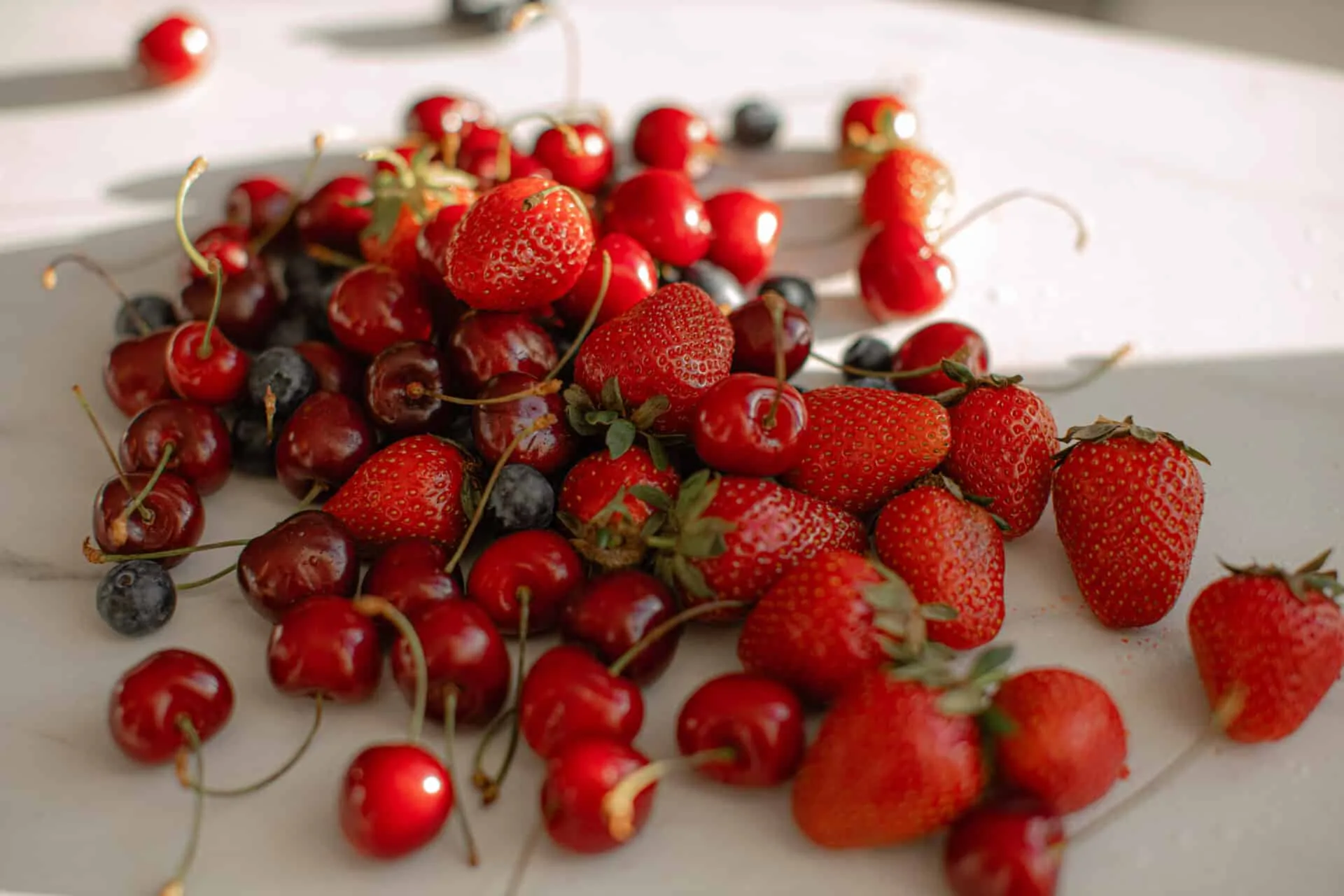Strawberries are a popular and delicious fruit, but do they need a lot of sun to grow? It is important to understand the amount of sunlight needed to successfully cultivate strawberries in order to ensure good yields. This article will discuss the amount of sun that strawberries need and other factors that affect their growth.Strawberries need at least 6 hours of full sun each day in order to produce the best crop. If they don’t receive enough sun, the crop will be reduced and the fruits will be smaller than usual.
Types of Strawberries That Require More Sun
Strawberries are a favorite summer snack, and they come in a variety of types. While some strawberry varieties do best in partial shade, others require more sun to thrive and produce the best flavor. Here are some of the types of strawberries that require more sun:
Alpine Strawberries: Alpine strawberries are small, fragrant, and sweet. They grow well in containers or garden beds with full sun exposure. They’re also incredibly versatile and can be used for both sweet and savory dishes.
Honeoye Strawberries: Honeoye strawberries are one of the earliest varieties to ripen, usually producing fruit by early June. The berries have a strong flavor and do best when grown in full sun.
Seascape Strawberries: Seascape strawberries are known for their large size and intense sweetness. These plants need full sun exposure to produce large fruits with great flavor.
Tristar Strawberries: Tristar strawberries were developed in the Netherlands for commercial growers but can also be easily grown at home. These plants need full sun to produce large, flavorful berries with excellent shelf life.
Ozark Beauty Strawberries: Ozark Beauty strawberries are an old-fashioned favorite that produces medium-sized fruits with excellent flavor. To get the best results from this variety, it should be planted in an area with at least 6 hours of direct sunlight per day.
Whether you’re growing these varieties in containers or garden beds, make sure to give them plenty of sun to ensure they thrive and produce delicious berries all season long!
Too Much Sun Bad for Strawberries?
Yes, too much sun can be bad for strawberries. Too much sun exposure can cause the berries to become over-ripe and potentially cause sunscald, a condition where the fruit becomes discolored and loses its flavor. To prevent this, it is important to provide adequate shade for your strawberry plants. This will help them avoid becoming over-exposed to direct sunlight and heat. Additionally, you should ensure that the soil is well-drained so that it does not become oversaturated with water after heavy rains or irrigation.
When planting strawberries, make sure to choose a spot in your garden that gets partial sun exposure and avoid planting them in an area that gets too much direct sunlight. If you have a sunny spot in your garden that offers some shade during the day, then this could be a good choice for growing strawberries. If not, then you may need to provide some extra shade using an umbrella or other type of shade cloth during the hottest parts of the day.
It is also important to ensure that your strawberry plants are given enough water to keep them healthy and hydrated without becoming oversaturated. To do this, check the soil regularly and water only when necessary – usually once or twice a week during hot weather – making sure not to let the soil dry out completely between watering sessions. Additionally, mulch around your strawberry plants can help regulate moisture levels in the soil and keep weeds at bay while providing an additional layer of protection from too much heat and direct sunlight.
Benefits of Sun for Strawberries
Strawberries are one of the most popular fruits in the world, and they require plenty of sunlight to grow properly. The sun provides essential energy for photosynthesis, which is the process by which plants create their food. Through photosynthesis, plants use sunlight to turn carbon dioxide and water into glucose and oxygen. This process is how strawberries get the essential nutrients they need to grow.
The sun also helps strawberries ripen, giving them a bright red color and sweet flavor. Strawberries naturally ripen in the sun, so a sunny day can help them reach peak flavor much faster than cloudy days. Additionally, a longer growing season can be beneficial for strawberry growers as it allows them to harvest more fruit at once.
The sun also helps protect strawberries against disease and pests. Plants produce their own natural defenses when exposed to sunlight, which can help protect against fungal diseases and insect infestations. By providing ample sunlight to their crops, strawberry farmers can minimize damage from pests and disease-causing organisms.
Finally, the sun helps keep soil temperatures warm enough for strawberry plants to thrive. Soil that is too cold can stunt a plant’s growth or even kill it outright. Sunlight helps keep soil temperatures at optimal levels so that strawberry plants have the best chance of growing healthy and strong.
In conclusion, the sun provides numerous benefits for strawberry plants, including essential energy for photosynthesis, aiding in ripening of fruit, providing natural defenses against pests and diseases, and helping maintain optimal soil temperatures for optimal growth conditions.
Ideal Growing Conditions for Strawberries
Strawberries are an easy crop to grow in a variety of environments and climates. They need full sun, good soil drainage, and plenty of nutrients to thrive. Adequate water is also essential for the production of healthy, sweet fruit. When it comes to ideal growing conditions, there are some key factors to consider.
Climate
When it comes to climate, strawberries prefer temperatures between 50-80°F (10-27°C), although they can survive in colder temperatures with proper protection. In cooler climates, mulch should be used to protect the plants from frost and winter temperatures. Strawberries also require a certain number of chill hours—the amount of time that temperatures drop below 45°F (7°C) for optimal growth and fruit production.
Soil
Strawberries thrive in well-draining soil with a pH between 5.5 and 6.8. If your soil is too acidic or alkaline, you may need to amend it with lime or sulfur before planting your strawberries. The soil should also be rich in organic matter like compost or manure as this helps retain moisture and increase fertility levels.
Watering
Strawberry plants require regular watering—about 1 inch per week—to produce sweet fruit. Too much water can lead to root rot and other diseases, so make sure the soil is not soggy or overly wet while still providing enough moisture for the plants.
Weed Control
Weeds can compete with strawberry plants for nutrients and water, so it’s important to keep them under control by removing them manually or using a mulch layer around your plants to prevent new weeds from sprouting up.
By providing these ideal growing conditions for strawberries you can ensure a healthy crop that produces juicy, sweet fruit throughout the season!

What Happens if Strawberries Don’t Get Enough Sun?
Strawberries are a warm-season fruit crop that need plenty of sunlight to develop properly. Without enough direct sunlight, the plants will be unable to grow to their full potential and may produce smaller, less flavorful berries. Plants will be more susceptible to disease and pests without abundant sunlight, leading to a reduced yield or even total crop failure.
In addition, inadequate sunlight means that photosynthesis is hindered, the process by which plants use energy from the sun to convert carbon dioxide into carbohydrates. This is essential for the plant’s growth and development process. Without sufficient sunlight, the plant will not have the energy it needs for healthy growth.
The lack of adequate sunlight can also cause plants to become overly stressed, resulting in weakened root development and lower quality fruits. This can reduce the plant’s immunity and make it more prone to disease.
Strawberry plants need at least 6 hours of direct sun per day in order to stay healthy and produce a good yield of berries. If your strawberry patch does not receive enough sunshine during the summer months, consider supplementing with artificial light or moving your plants to a sunnier location for optimal growth and yield.
Tips for Planting Strawberries in Sunny Locations
Strawberries are a delicious and easy-to-grow fruit, making them a great addition to sunny gardens. Here are some tips for planting strawberries in sunny locations.
First of all, it’s important to choose the right variety of strawberry for your area. Some varieties do better in cooler climates, while others thrive in warmer climates. Take the time to research which types of strawberries would be best suited to your location and climate.
When planting strawberries, make sure to choose a location that gets plenty of sunlight throughout the day. The plants need at least six hours of direct sunlight each day. If possible, they should be planted in an area that receives full sun all day long.
It’s important to make sure that the soil is well-drained and has plenty of organic matter added to it. Good drainage is essential for healthy strawberry plants, so if the soil is too soggy or poorly drained, it should be amended with compost or other organic matter before planting.
If you’re growing strawberries in containers, make sure that the containers have plenty of drainage holes so that excess water can escape and not pool at the base of the plant. The containers should also be large enough to accommodate the root system of your strawberry plants without becoming overcrowded.
Finally, it’s important to remember that strawberries need regular watering during dry periods and mulching around their base with straw or wood chips will help keep their roots cool and moist during hot summer months. Taking these steps will ensure that your strawberry plants thrive in sunny locations!
Shade Requirements for Growing Strawberries
Strawberries need a minimum of 6 hours of direct sunlight each day to produce the most flavorful and healthiest fruits. If you are growing strawberries in an area that gets less than 6 hours of direct sunlight, it is important to ensure that the plants are receiving ample shade. When choosing a spot for your strawberry patch, look for areas that have some light shade in the afternoon, such as under trees or near tall shrubs. This will help protect the plants from the intense heat of the sun and keep them from drying out too quickly. Additionally, you may want to consider providing some additional shade during especially hot days or if your area has prolonged periods of drought.
If you are unable to find a location that offers partial shade throughout the day, you can also install makeshift structures such as shade cloths or umbrellas to provide additional protection from the sun’s rays. You can also use trellises or arbors to provide some extra shade during peak hours of sunlight. Whichever option you choose, make sure to check on your strawberry plants regularly and adjust the amount of sun they receive accordingly.

Conclusion
Strawberries need a lot of sun to grow and thrive. They require at least six hours of direct sunlight daily and should be planted in a sunny, well-drained location. Mulching can help retain moisture levels and reduce weeds that may compete for sunlight and nutrients. When planted in ideal conditions, strawberries can produce an abundant crop of sweet, juicy berries that can be enjoyed fresh or used in recipes.
With proper care, strawberry plants can provide years of delicious harvests. Knowing the best growing conditions for your particular variety will help ensure a successful crop. With the right amount of sun, water and nutrients, you’ll be enjoying fresh strawberries all season long!



